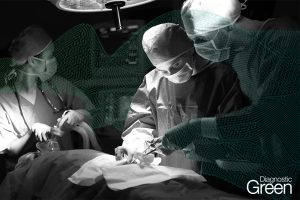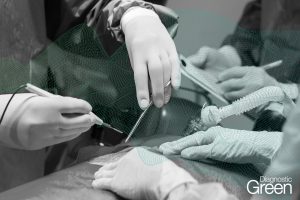Purpose: Indocyanine green (ICG) is being used more and more in Urology along with advances in minimal invasive surgery, guiding excision and reconstruction, highlighting anatomic structures and functional features with oncologic guidance still being debatable. The purpose of this paper was to explore ICG use in urologic procedures. We present our experience (37 cases) of using ICG fluorescence guidance in urologic operations performed using 3D laparoscopy and FireFly® fluorescence imaging mode of Da Vinci X robot. The operations were the following: pelvic lymphadenectomy in radical prostatectomy, totally intracorporeal orthotopic ileal neobladder reconstruction, vesicovaginal fistula repair, partial nephrectomy and pyeloplasty. Barnard’s test was used to compare postoperative complications (digestive fistula, ureteral stricture) for totally intracorporeal ileal neobladders performed with (group e, 27 cases) vs. without (group 2, 28 cases) ICG guidance.
Results: ICG under near-infrared fluorescence offered a precise identification of ischemic structures- vaginal wall, distal ureteral end, ileal loop, along with vascularized tissues allowing an optimal pyeloplasty and nephron sparing surgery with partial unclamping. It also allowed the identification of a lymph node during radical prostatectomy that otherwise would not have been excised during the routinely performed pelvic lymphadenectomy. There were no complications of ICG usage and the complication rate (digestive fistula, ureteral strictures) was significantly lower (p=0.002716) for group 1 compared with group 2.
Conclusions: ICG facilitates the identification of key elements (anatomy and pathological structures) in the laparoscopic and robotic treatment of both malignant and benign urologic diseases, with possible impact on perioperative complications, along with oncologic and functional postoperative outcomes.




